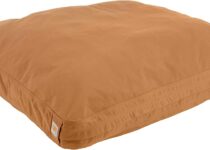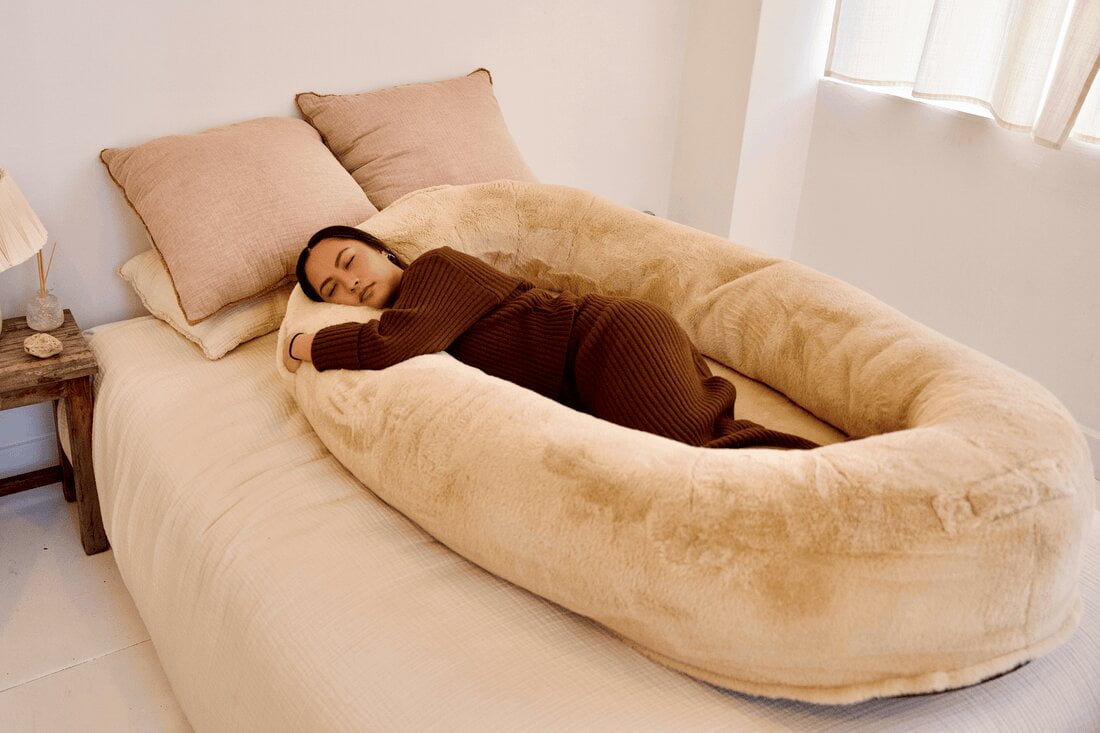Is a ramp or stairs better for dogs?
I know that most dog owners want the best for their pets and are ready to provide their furry friends with the best possible care, comfort, and safety. This also includes providing them with proper means of access to furniture, vehicles, and other elevated areas. Two popular options for this purpose are ramps and stairs.
However, choosing between them can be a bit frustrating. So, in this article, we will explore all you need to know about ramps and stairs, the differences between dog ramps and stairs, their advantages and disadvantages, and help you make an informed decision on whether a ramp or stairs are better for your dog. We will also recommend some ramps and stairs that you can buy for your dogs.
Is a ramp or stairs better for dogs?
The choice between a dog ramp or stairs for your dog depends on your dog’s individual needs and circumstances. If your dog has mobility issues or struggles with stairs, a ramp may be the better choice. However, if your dog is able to use stairs and they are more convenient or affordable for you, stairs may be the better option.
What are the benefits of a dog ramp?
Here are some of the benefits or reasons why dog ramps are better than stairs:
- Gentle on Joints: Ramps are particularly beneficial for dogs with joint problems or mobility issues. They provide a gentle incline that reduces the strain on the dog’s joints, making it easier for them to access higher surfaces like beds or sofas without the need to jump or climb stairs. This is particularly important for senior dogs, those recovering from injuries or surgery, and breeds prone to orthopedic issues. Check out the reasons why it is risky for dogs to jump off beds.
- Customizable: Another advantage of dog ramps is that they are customizable to the specific needs of your pet. They come in various sizes, lengths, and incline angles, allowing you to find the perfect fit for your dog’s size, weight, and mobility level. Some ramps also come with adjustable heights, allowing you to use them for different surfaces and purposes.
- Safe: Dog ramps are also safer than stairs in some situations. Dogs with poor eyesight or balance may find it challenging to navigate stairs, especially if they are steep or have a high rise. Ramps provide a flat surface that is easier to navigate and reduces the risk of falls or injuries.
Disadvantages of Dog Ramps
- Space-consuming: One drawback of dog ramps is that they can take up more space than stairs. Ramps need to have a certain length to provide a gentle incline, which may not be feasible in smaller living spaces. This can be an issue if you have limited space or want to use the ramp for different purposes, such as in your car or on your boat.
- Requires Training: Dogs may require some training to get used to using ramps. Some dogs may be hesitant or scared to use them at first, especially if they have never used a ramp before. However, with some patience and positive reinforcement, most dogs can learn to use a ramp in a short time.
What are the benefits of a dog stairs?
In comparison with ramps, here are the benefits of using stairs instead of ramps:
- Space-saving: Dog stairs are generally more space-saving than ramps. They take up less floor space and are easier to store and transport. This makes them an excellent option if you have limited space or want to use them in different areas of your home.
- Easy to Use: Stairs are also easy for most dogs to use. Dogs are natural climbers and are generally comfortable with stairs, especially if they have been exposed to them from a young age. This makes stairs an excellent option for healthy and active dogs that can climb without strain.
- Affordable: Dog stairs are also typically less expensive than ramps, making them a more budget-friendly option for pet parents.
Disadvantages of Dog Stairs
- Strain on joints: One of the disadvantages of dog stairs is that they can put strain on a dog’s joints, especially if the rise is too high or the stairs are too steep. This can be problematic for dogs with mobility issues, arthritis, or other joint-related problems.
- Safety Concerns: Stairs can also be risky for dogs, especially those that are slippery or have open risers. Dogs can slip or fall through the gaps, causing injuries or accidents. This is particularly concerning for senior dogs or those with poor eyesight.
Read also>> How long does a dogs scent last on a blanket?
Factors to consider when choosing ramps or stairs for your dog
When choosing ramps or stairs for your dog, there are several factors to consider to ensure that you select the best option for your pet’s needs. Here are some key factors to keep in mind:
Size and Weight Capacity
The size and weight capacity of the ramps or stairs are essential to consider to ensure that your dog can use them safely. Make sure to choose stairs that are appropriate for your dog’s size and weight, and check the weight capacity of the stairs to ensure that they can support your dog’s weight.
Step Height and Depth
The height and depth of each step on the stairs should be comfortable and manageable for your dog to climb up and down. The step height should not be too high or too low, and the depth should be enough to provide a stable surface for your dog to stand on without slipping.
Slope and Length
The slope and length of the ramp should be comfortable and manageable for your dog to climb up and down. The ramp should have a gentle incline and should not be too steep or too long, as this can be tiring for your dog to navigate.
Material
The material of the stairs or ramps should be durable and able to withstand your dog’s weight and activity level. Stairs or ramps made of sturdy materials such as wood, plastic, or metal can provide the necessary support and stability for your dog.
Traction
The stairs or ramps should have a non-slip surface to prevent your dog from slipping or falling while using them. Look for stairs with a textured or carpeted surface to provide traction and stability.
Portability and Storage
Consider the portability and storage options of the stairs or ramps, especially if you plan to move them around the house or take them on trips. Stairs or ramps that are lightweight and easy to fold or store can be a convenient option.
Design and Style
Stairs or ramps come in various designs and styles, so consider choosing stairs that complement your home decor while also meeting your dog’s needs. You can choose from traditional stairs, ramps, or stairs with adjustable heights.
Knowing when a ramp or stairs are needed
If you are a dog owner and you are wondering when a ramp or stairs is needed, here are some of the situation that may require the usage of either of the two:
Stairs or a Ramp for Senior Dogs
As dogs age, they may start to experience mobility issues, such as arthritis or joint pain. Stairs or a ramp can help senior dogs get on and off elevated surfaces, such as a bed or couch, without putting too much strain on their joints. This can help prevent further injury and discomfort and make it easier for them to move around.
Meanwhile, you can check out the best dog bed for dogs with arthritis.
Stairs or a Ramp for Dogs with Arthritis
Arthritis is a common condition in dogs, especially in larger breeds and older dogs. The condition can cause pain and stiffness in the joints, making it difficult for dogs to climb stairs or jump onto furniture. Providing stairs or a ramp can help arthritic dogs maintain their independence and reduce the risk of further injury.
Stairs or a Ramp for Small Breed Dogs
Small breed dogs, such as Chihuahuas or Yorkshire Terriers, may have difficulty navigating tall or steep stairs due to their size. In addition, jumping down from elevated surfaces can put a strain on their joints and lead to injuries. Stairs or a ramp can help small breed dogs access elevated surfaces with ease and reduce the risk of injuries.
Stairs or a Ramp for Dogs Who Are Disabled or in Recovery
Dogs who are disabled or recovering from an injury or surgery may have limited mobility and may require assistance getting around. Stairs or a ramp can provide a safe and secure way for these dogs to access elevated surfaces or move around the house without putting too much stress on their injured or weakened limbs.
Stairs or a Ramp for Puppies
Puppies are still developing and may not have the coordination or strength to climb stairs or jump onto furniture. Providing stairs or a ramp can help puppies access elevated surfaces without the risk of falls or injuries. Additionally, using stairs or a ramp from a young age can help prevent joint and mobility issues as they grow older.
Frequently Asked Questions
What is the best material for a dog ramp or stairs?
The best material for a dog ramp or stairs depends on your dog’s size, weight, and mobility level, as well as your budget and personal preferences. Common materials include wood, plastic, aluminum, and foam. Choose a material that is sturdy, slip-resistant, and easy to clean.
Read also>> How to Make Your Dog’s Bed Cozy for Winter
How do I train my dog to use a ramp or stairs?
Training your dog to use a ramp or stairs requires patience, positive reinforcement, and repetition. Start by introducing your dog to the ramp or stairs and rewarding them for any attempts to use them. Gradually increase the difficulty level and distance, and praise and reward your dog for each successful attempt.
Can dog ramps and stairs be used outdoors?
Yes, dog ramps and stairs can be used outdoors, but you need to choose a material that is weather-resistant and durable. Consider the terrain, temperature, and exposure to sunlight and moisture when selecting an outdoor ramp or stairs.
What is the weight limit for dog ramps and stairs?
The weight limit for dog ramps and stairs varies depending on the material, design, and manufacturer. Always check the weight limit before purchasing a ramp or stairs, and choose one that can support your dog’s weight and size.
Can dog ramps and stairs be used for other pets, such as cats?
Yes, dog ramps and stairs can be used for other pets, such as cats. However, you may need to adjust the height, length, or incline angle to suit your cat’s size and mobility level.


